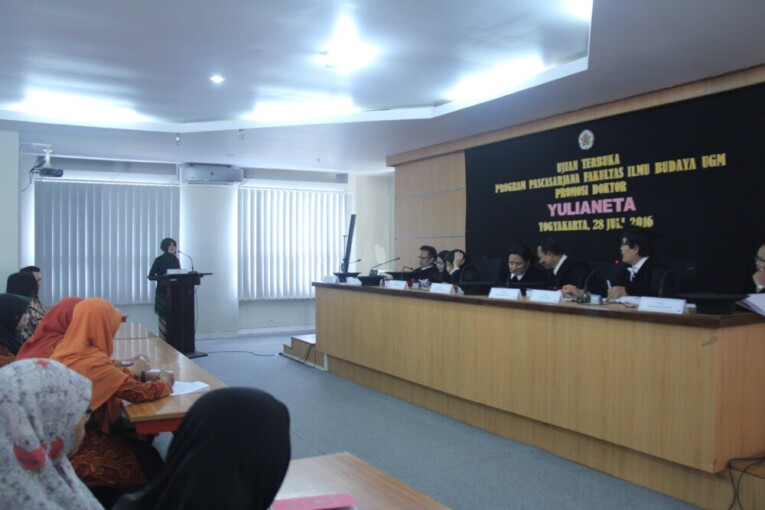
The use of construction materials from fast-growing bamboo instead of wood can be a long-term solution to the problems of global warming. Laminated bamboo beams that have similar characters to that of wood can be sized as needed to increase the carrying capacity. However, the failure of defective adhesion between bamboo beams is still a problem, so we need to minimize the occurrence of horizontal sliding between lamina.
“The occurrence of horizontal sliding on the beams of laminated bamboo resulted in a broken slide so that the strength of laminated bamboo blocks have not exceeded the strength of the basic material that is used,” Iskandar Yasin said in his open doctoral exams, Wednesday (27/7), at the Department of Civil and Environmental Engineering, Faculty of Engineering UGM.
Inter lamina fused behavior, he said, could happen if the horizontal sliding can be prevented, that is, when the interface horizontal slide is held by shear connector on each specified intervals so as to provide a mechanical connection. One method that can be used is incising system or perforating lamina with certain depth and certain diameter at specified intervals. Adhesive that is filling incising holes will harden into shear connector so that the adhesive serves as adhesive as well as shear connector.
In his dissertation, he examines the nature of physics and mechanics of petung bamboo basic material that have been compressed with variations of clamp pressure, influence of bond between adhesives with the basic material of bamboo, as well as the strength of beams of laminated bamboo with adhesive incising shear connector and optimum clamp pressure. Characteristics of physics that are examined include water content and density, while the characteristics of mechanics include shear strength, tensile strength, compressive strength, perpendicular compressive strength, modulus of elasticity, and modulus of rupture.
Of this research, one of the results was that the use of shear connector adhesive raises inter lamina adhesive in sliding block testing with average shear strength reached an optimum at a distance of 4×4 mm incising and at a clamp pressure of 2 MPa with the shear strength average 8.158 MPa. These results showed an increase in shear strength of 22.71% compared to average shear strength of reference lamination block.
In addition, he found the extent of shear stress on the blocks of laminated bamboo with different incising and clamp pressure patterns. Variations which he did in both cases also showed significant differences in the mechanical properties of laminated bamboo blocks.
“The optimum of experimental testing of the shear stress is at incising pattern of 4×4 with 2 MPa pressure, namely 11.76 MPa,” said the engineering lecturer from Sarjanawiyata Tamansiswa University in Yogyakarta.


